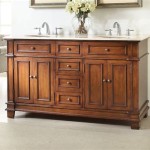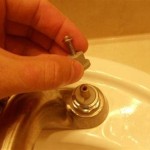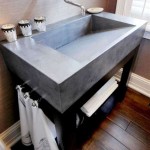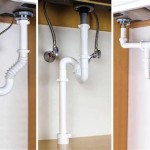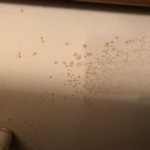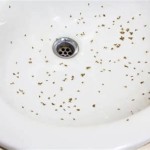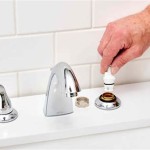How To Clean Bathroom Sink With Baking Soda And Vinegar
Maintaining a clean bathroom sink is crucial for both hygiene and aesthetics. Over time, sinks accumulate soap scum, hard water stains, toothpaste splatters, and general grime. While numerous commercial cleaning products are available, a simple and effective solution often lies in the combination of baking soda and vinegar. These common household items, when used correctly, can effectively clean and disinfect a bathroom sink, leaving it sparkling and fresh.
This article provides a comprehensive guide on how to clean a bathroom sink using baking soda and vinegar, outlining the steps, safety precautions, and alternative methods for tackling particularly stubborn stains and buildup. Understanding the chemical properties of these ingredients and their interaction is essential for maximizing their cleaning potential and preventing any potential damage to the sink.
Preparing for the Cleaning Process
Before embarking on the cleaning process, it is important to gather the necessary materials and prepare the sink area. This includes assembling the cleaning agents, protective gear, and cleaning tools. Proper preparation ensures a smooth and efficient cleaning experience, minimizing the risk of accidents or incomplete cleaning.
First, gather the following materials: baking soda, white vinegar, a soft-bristled brush or sponge, a microfiber cloth, rubber gloves, and eye protection (optional but recommended). Baking soda acts as a mild abrasive, helping to loosen and lift grime from the surface. White vinegar, an acidic solution, effectively dissolves mineral deposits and soap scum. The soft-bristled brush or sponge is used to scrub the sink, while the microfiber cloth is ideal for wiping away residue and polishing the surface.
Rubber gloves are recommended to protect the skin from prolonged exposure to the cleaning agents, preventing irritation or dryness. Eye protection, such as safety glasses or goggles, is optional but advisable to shield the eyes from accidental splashes of vinegar or baking soda mixture. A small bowl or container may also be useful for mixing the baking soda and vinegar into a paste, depending on the preferred cleaning method.
Next, prepare the sink area by removing any items from the sink and countertop, such as soap dispensers, toothbrush holders, and toiletries. This ensures unobstructed access to all surfaces of the sink, allowing for thorough cleaning. Rinse the sink with warm water to loosen any loose debris and pre-wet the surface, which will aid in the application of the cleaning agents.
Ensure adequate ventilation in the bathroom by opening a window or turning on the exhaust fan. This helps to dissipate any strong odors from the vinegar and promotes a more comfortable cleaning environment. With the materials gathered and the sink area prepared, the cleaning process can proceed effectively and safely.
The Baking Soda and Vinegar Cleaning Method
The core of this cleaning method lies in the synergistic action of baking soda and vinegar. When combined, they create a chemical reaction that releases carbon dioxide, producing a fizzing action that helps to lift dirt and grime. This method is effective for cleaning various types of sink materials, including porcelain, stainless steel, and ceramic. However, it is always prudent to test the mixture on a small, inconspicuous area first to ensure it does not damage the surface.
Begin by sprinkling a liberal amount of baking soda evenly over the entire surface of the sink. Focus particularly on areas with visible stains or buildup, such as around the drain and faucet. The baking soda will act as a gentle abrasive, loosening the dirt and preparing the surface for the vinegar treatment. Avoid using excessive force when applying the baking soda, as this could scratch delicate sink materials.
Next, pour a moderate amount of white vinegar onto the baking soda-covered surface. The vinegar will react with the baking soda, creating a fizzing action. Allow the mixture to fizz for several minutes, typically around 5-10 minutes. This fizzing action helps to dissolve soap scum, hard water stains, and other types of buildup. The duration of the fizzing process can be adjusted depending on the severity of the stains. For heavily soiled sinks, allowing the mixture to sit for a longer period may be necessary. However, do not let the mixture dry completely, as this can make it more difficult to remove.
After the fizzing has subsided, use a soft-bristled brush or sponge to scrub the sink thoroughly. Pay particular attention to areas with stubborn stains or buildup. Apply gentle pressure and use circular motions to dislodge the dirt. Avoid using abrasive scrub pads or steel wool, as these can scratch the sink surface. For hard-to-reach areas, such as around the faucet and drain, use a smaller brush or a toothbrush to ensure thorough cleaning.
Once the sink has been thoroughly scrubbed, rinse it with warm water. Ensure all traces of baking soda and vinegar are removed. Use a microfiber cloth to wipe down the sink and dry it completely. This will help to prevent water spots and leave the sink with a polished finish. Inspect the sink for any remaining stains or buildup. If necessary, repeat the process or use one of the alternative cleaning methods described later in this article.
For sinks with especially stubborn stains, a paste of baking soda and vinegar can be applied directly to the affected area. To create the paste, mix baking soda and vinegar in a small bowl until a thick consistency is achieved. Apply the paste to the stained area and allow it to sit for a longer period, up to 30 minutes or more. Then, scrub the area with a soft-bristled brush and rinse thoroughly with warm water.
Regular cleaning of the bathroom sink with baking soda and vinegar can help to prevent the buildup of soap scum, hard water stains, and other types of grime. Aim to clean the sink at least once a week, or more frequently if necessary, to maintain its cleanliness and appearance.
Addressing Stubborn Stains and Buildup
While the baking soda and vinegar method is generally effective for cleaning bathroom sinks, certain types of stains and buildup may require additional attention. Stubborn stains, such as rust stains or hard water deposits, can be more challenging to remove and may necessitate the use of alternative cleaning agents or techniques.
For rust stains, a solution of lemon juice and salt can be an effective remedy. Lemon juice contains citric acid, which helps to dissolve rust. Salt acts as a mild abrasive, aiding in the removal of the rust stain. To use this method, sprinkle salt over the rust stain and then squeeze lemon juice onto the salt. Allow the mixture to sit for several hours or overnight. Then, scrub the area with a soft-bristled brush and rinse thoroughly with warm water. Repeat the process if necessary.
Hard water deposits, also known as limescale, are mineral deposits that accumulate on surfaces exposed to hard water. These deposits can be difficult to remove with conventional cleaning methods. A stronger acidic solution, such as undiluted white vinegar, may be necessary to dissolve the hard water deposits. Soak a cloth or paper towel in white vinegar and apply it to the affected area. Allow the vinegar to sit for several hours or overnight. Then, scrub the area with a soft-bristled brush and rinse thoroughly with warm water. For particularly stubborn hard water deposits, a commercially available limescale remover may be required.
Another effective solution for stubborn stains involves hydrogen peroxide. Hydrogen peroxide is a mild bleaching agent that can help to lighten and remove stains. To use this method, apply hydrogen peroxide directly to the stained area and allow it to sit for several minutes. Then, scrub the area with a soft-bristled brush and rinse thoroughly with warm water. Exercise caution when using hydrogen peroxide, as it can have a bleaching effect on certain materials. Test the solution on a small, inconspicuous area first to ensure it does not damage the surface.
In cases of extremely stubborn buildup, a combination of methods may be necessary. For instance, one might start with the baking soda and vinegar method to loosen the initial grime, followed by the lemon juice and salt method to address rust stains, and finally, the undiluted white vinegar method to dissolve hard water deposits. This multi-pronged approach can be highly effective in restoring the sink to its original cleanliness.
Regardless of the method used, it is crucial to thoroughly rinse the sink with warm water after each cleaning step to remove any residual cleaning agents. Drying the sink with a microfiber cloth after rinsing will help to prevent water spots and leave the surface with a polished finish.
By understanding the nature of different types of stains and buildup and employing the appropriate cleaning methods, it is possible to effectively restore even the most neglected bathroom sink to its pristine condition. Consistent cleaning and preventative maintenance are essential for minimizing the accumulation of dirt, grime, and stains, ensuring that the sink remains clean and hygienic for years to come.

Unclog Drains Naturally With Baking Soda And Vinegar Mom 4 Real

Why You Should Never Use Baking Soda And Vinegar To Clean Clogged Drains Bren Did

Can You Really Clean The Drain With Baking Soda And Vinegar

Unclog Drains Naturally With Baking Soda And Vinegar Mom 4 Real

Why You Should Never Use Baking Soda And Vinegar To Clean Clogged Drains Bren Did

Cleaning With Vinegar And Baking Soda

Baking Soda And Vinegar Are The Best Cleaning 2024

How To Clean With Baking Soda And Vinegar Katieskottage

Unclog Drains Naturally With Baking Soda And Vinegar Mom 4 Real
Tiktok To Unclog Drains With Baking Soda And Vinegar Works
Related Posts
